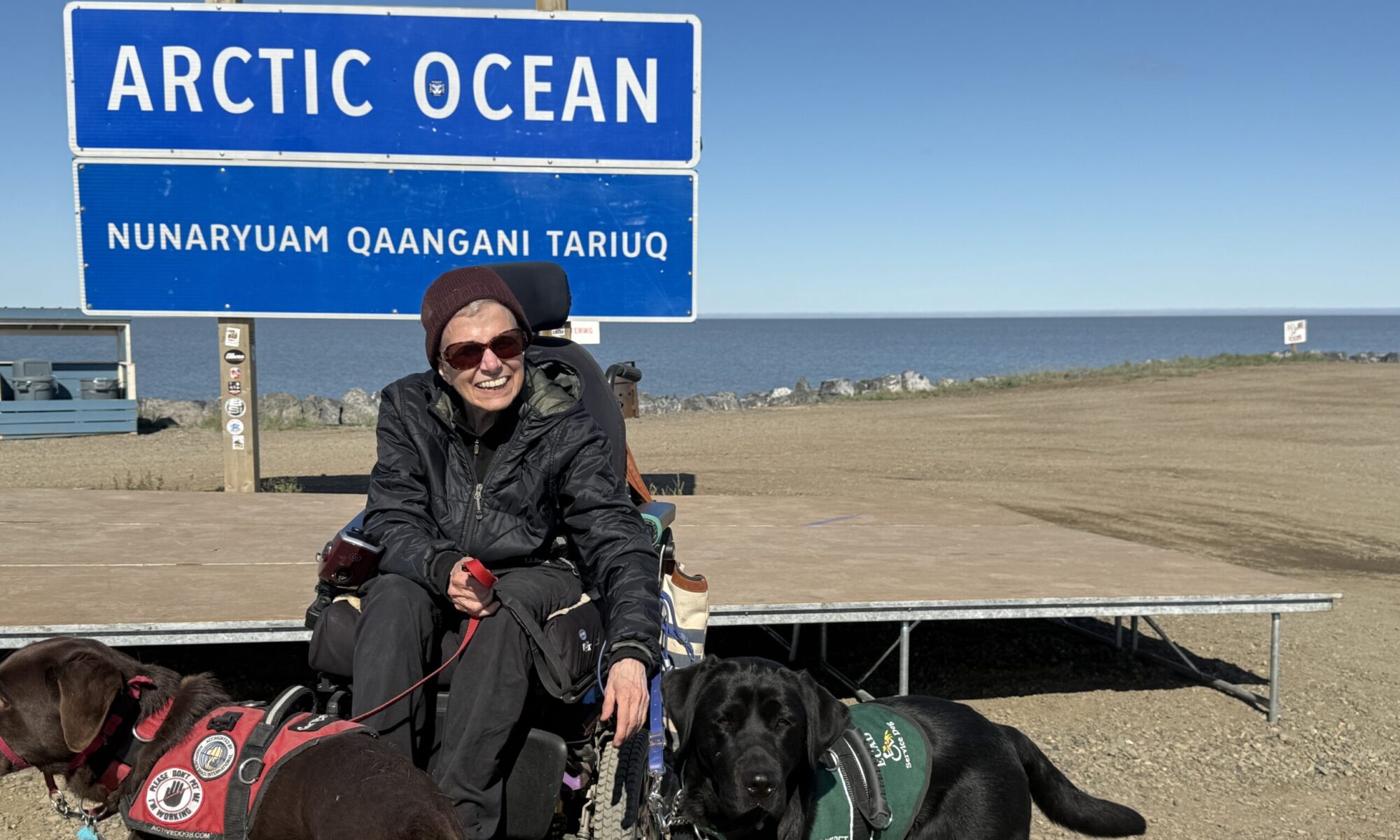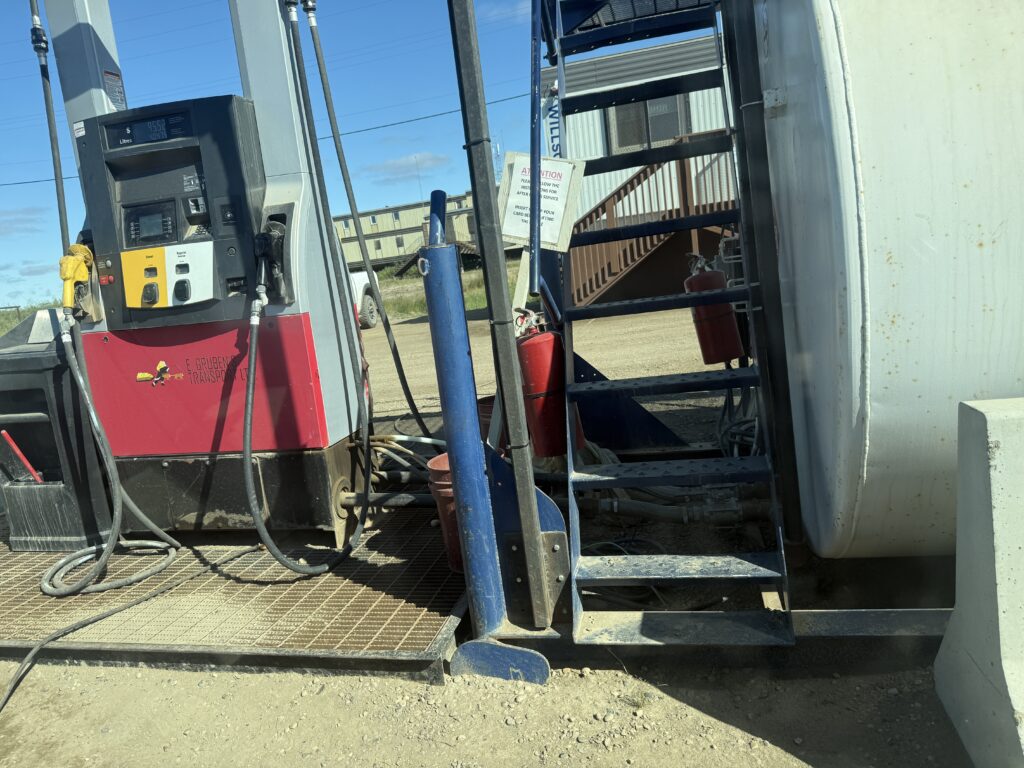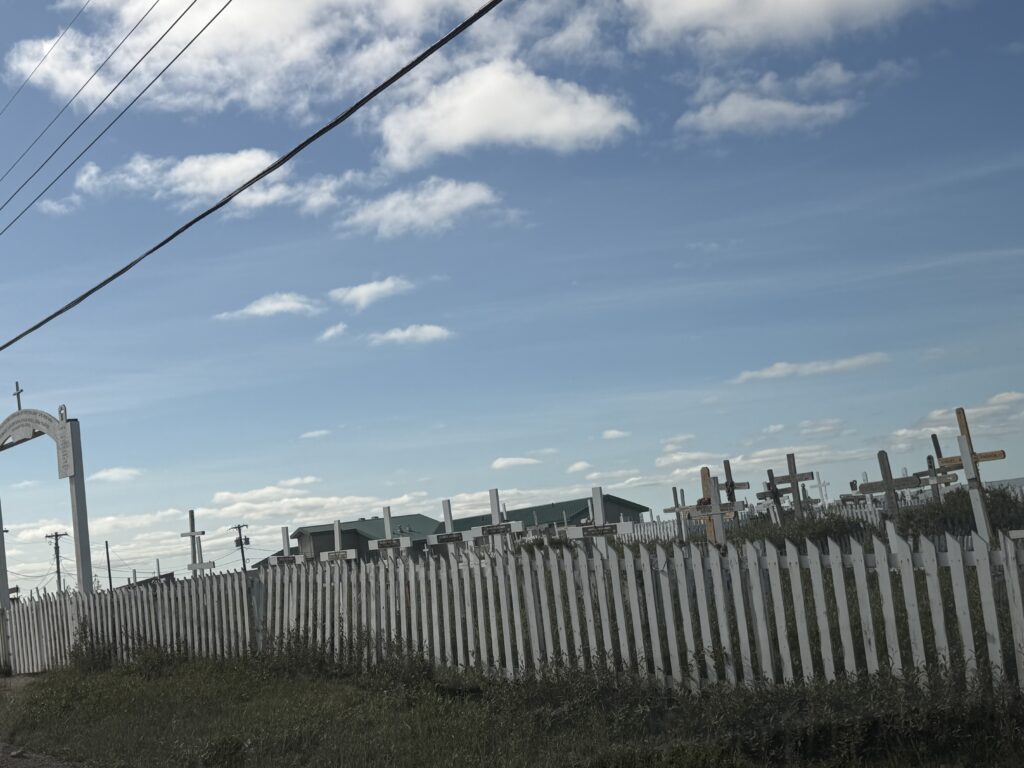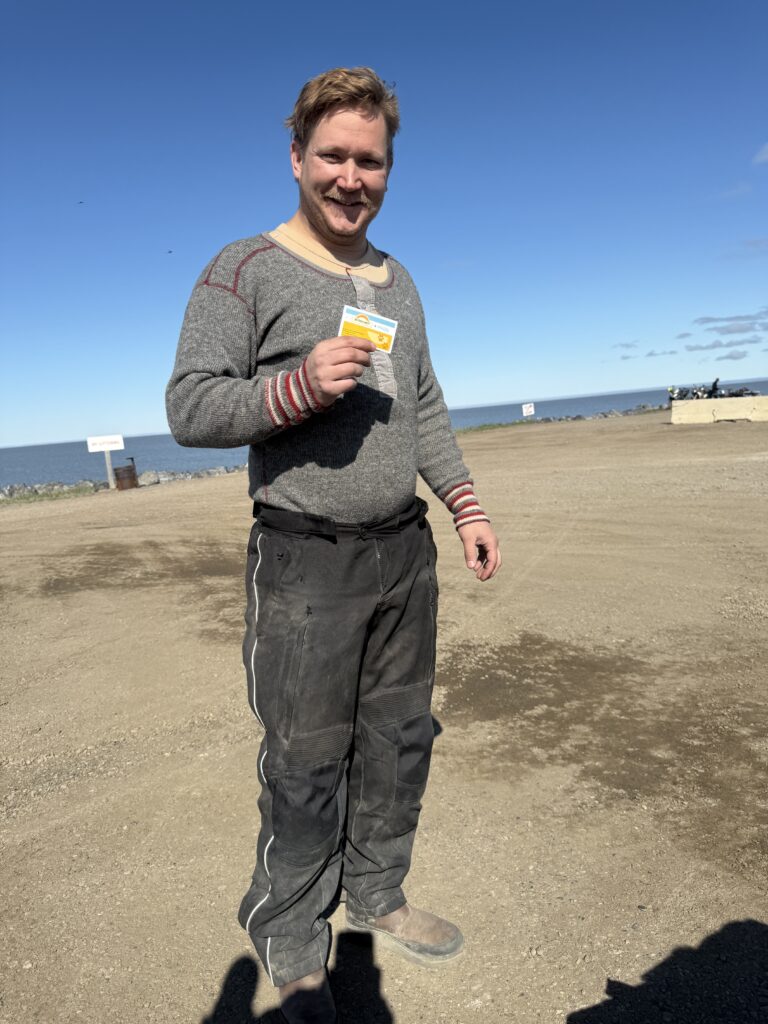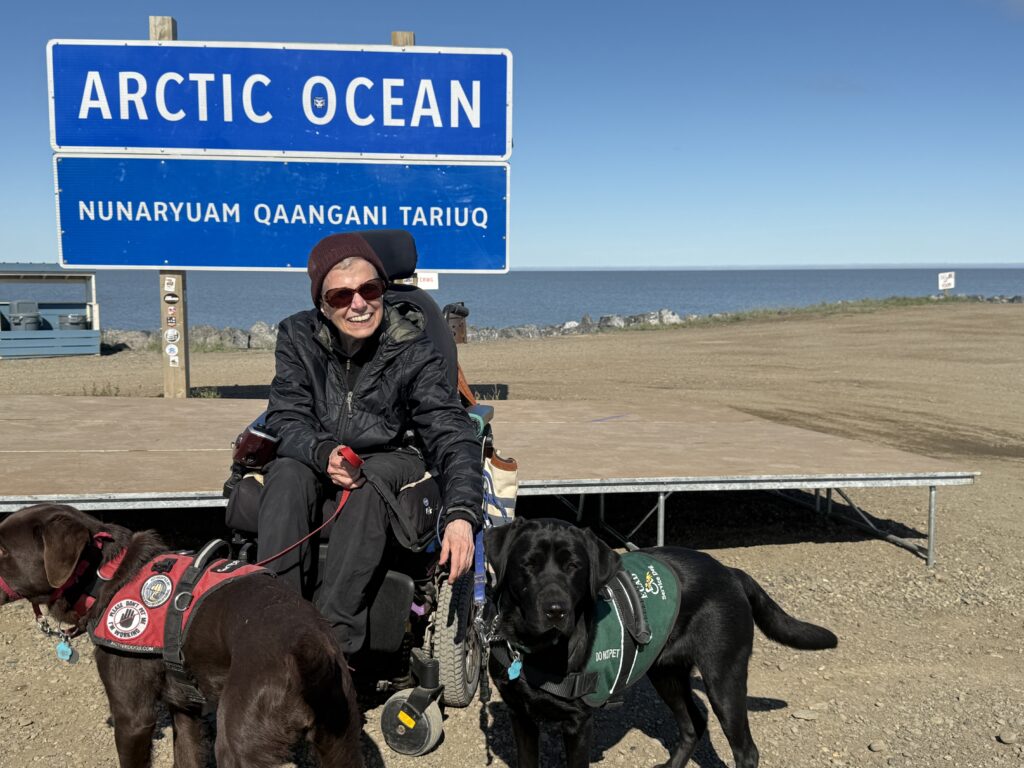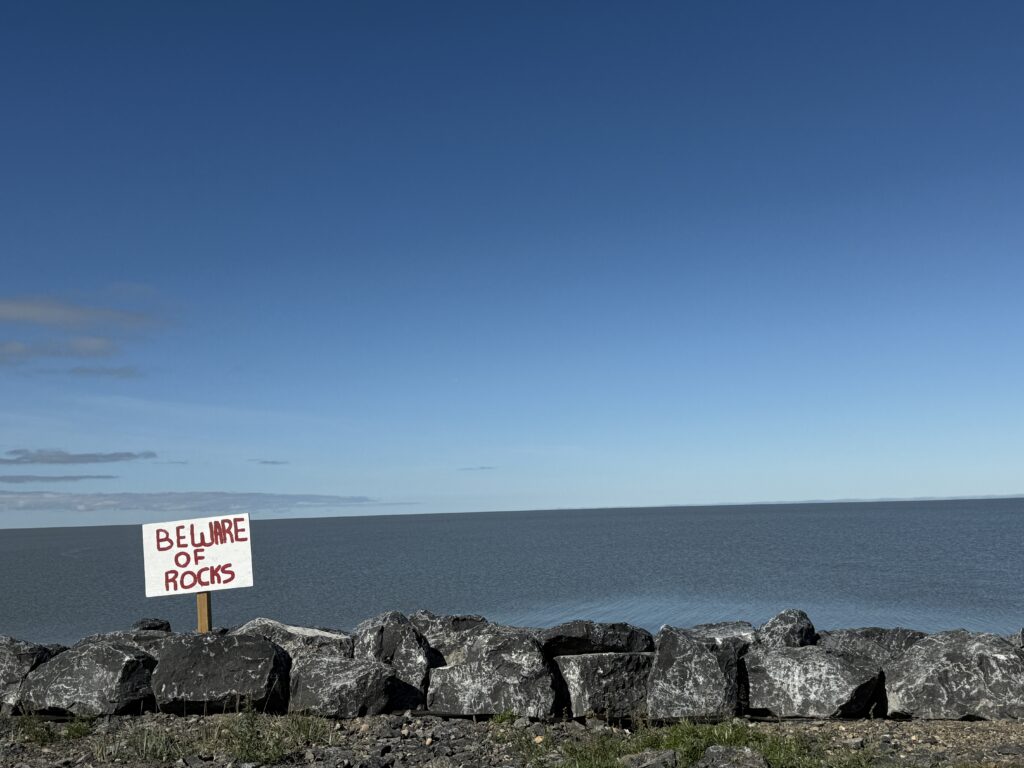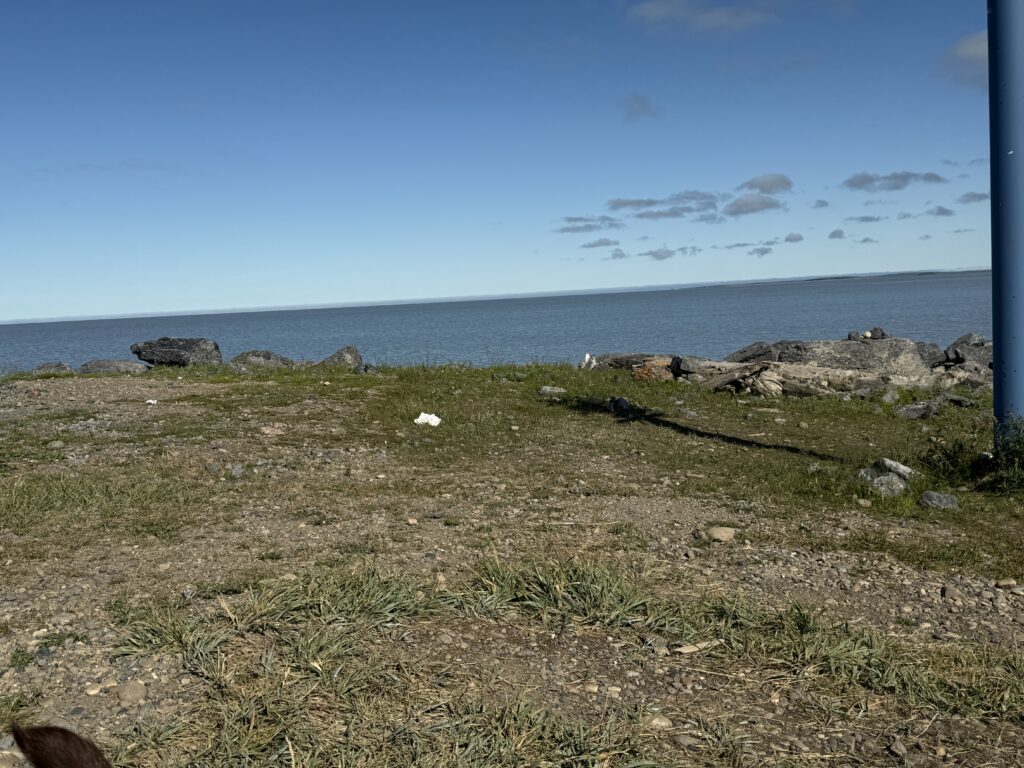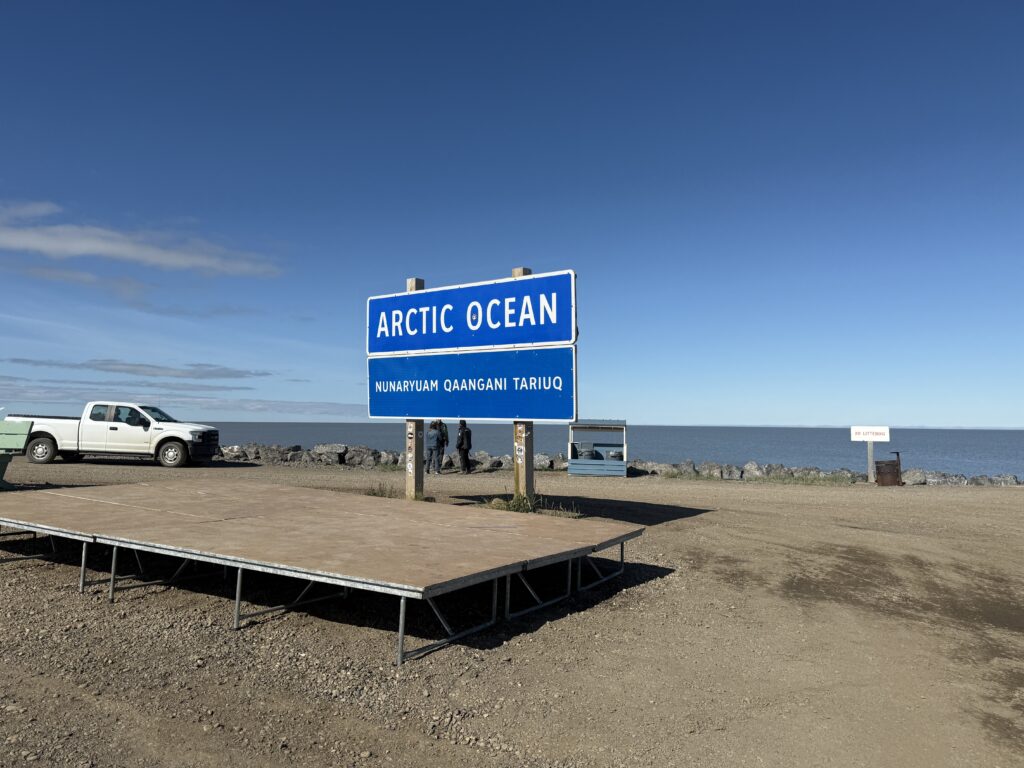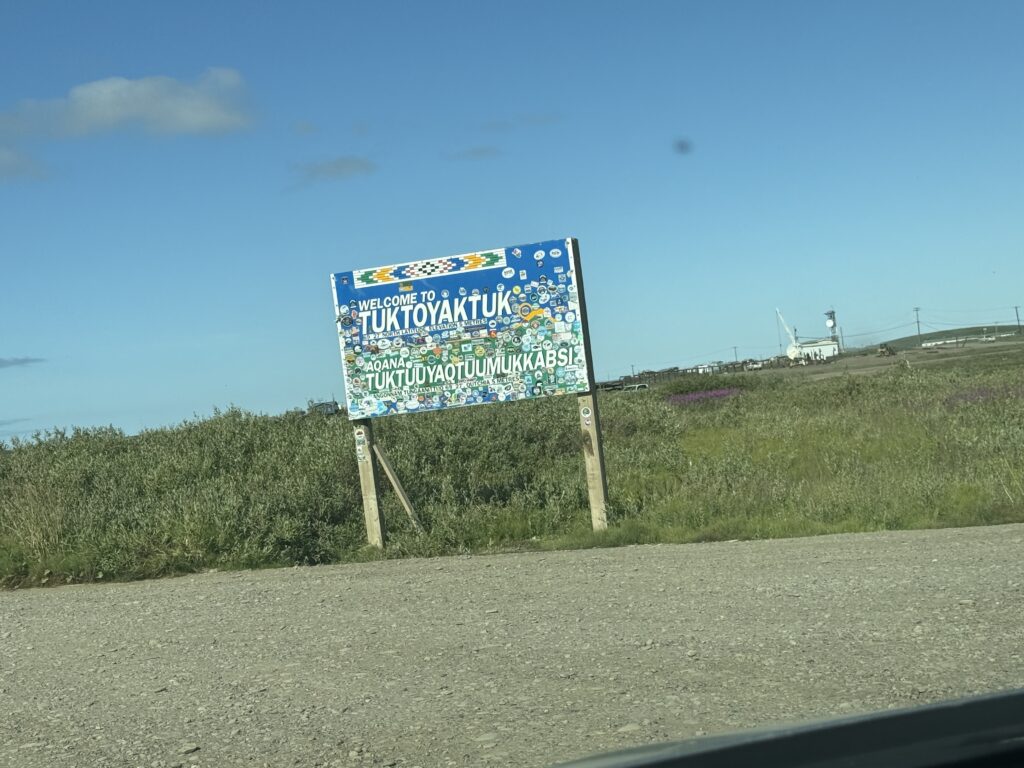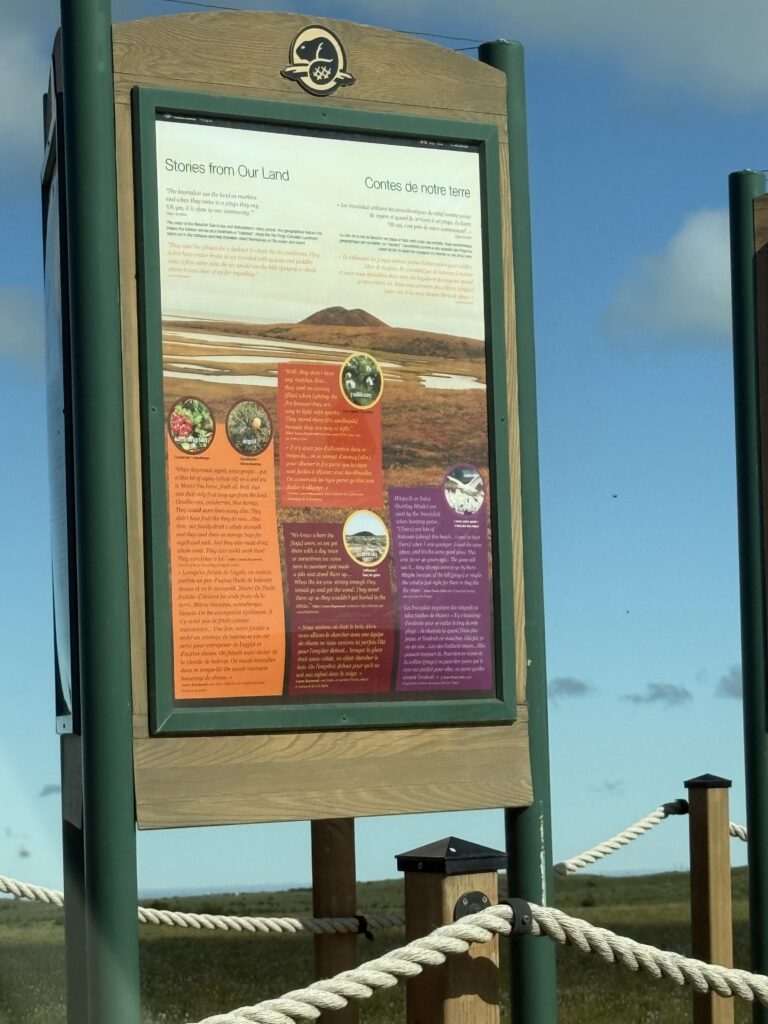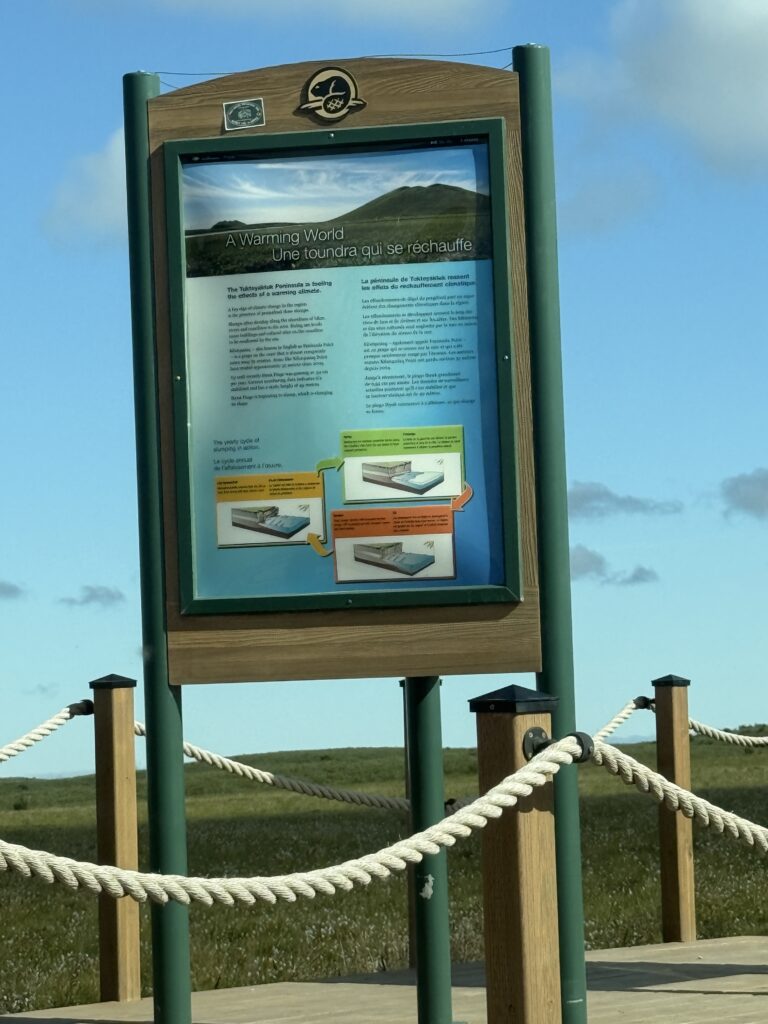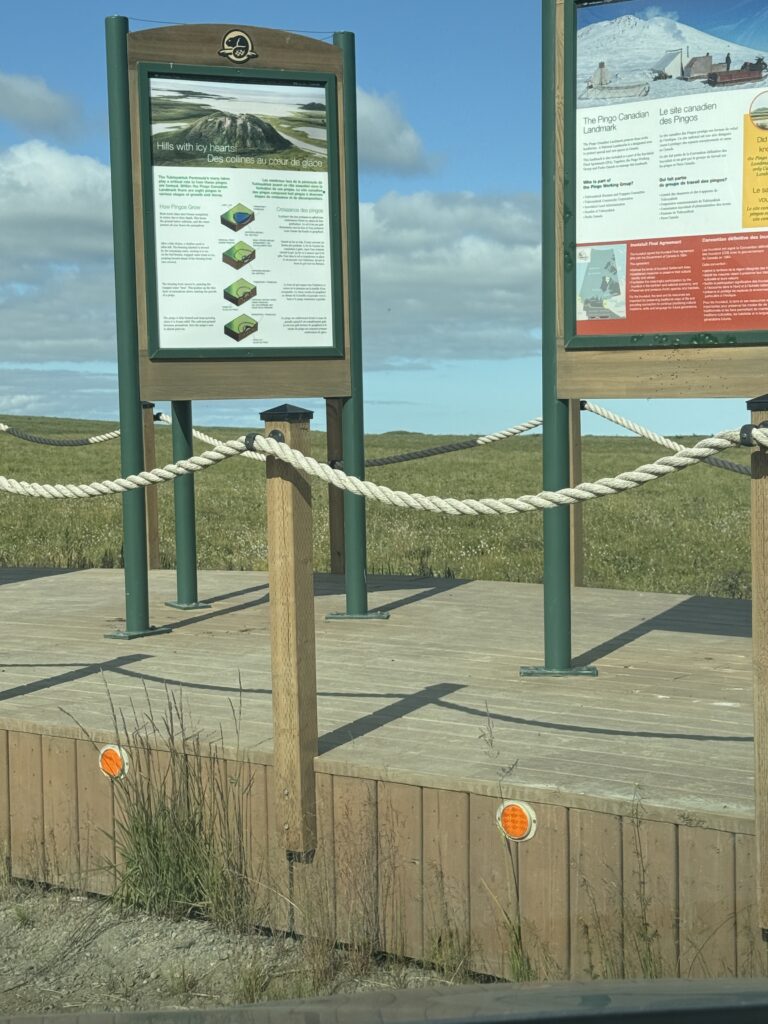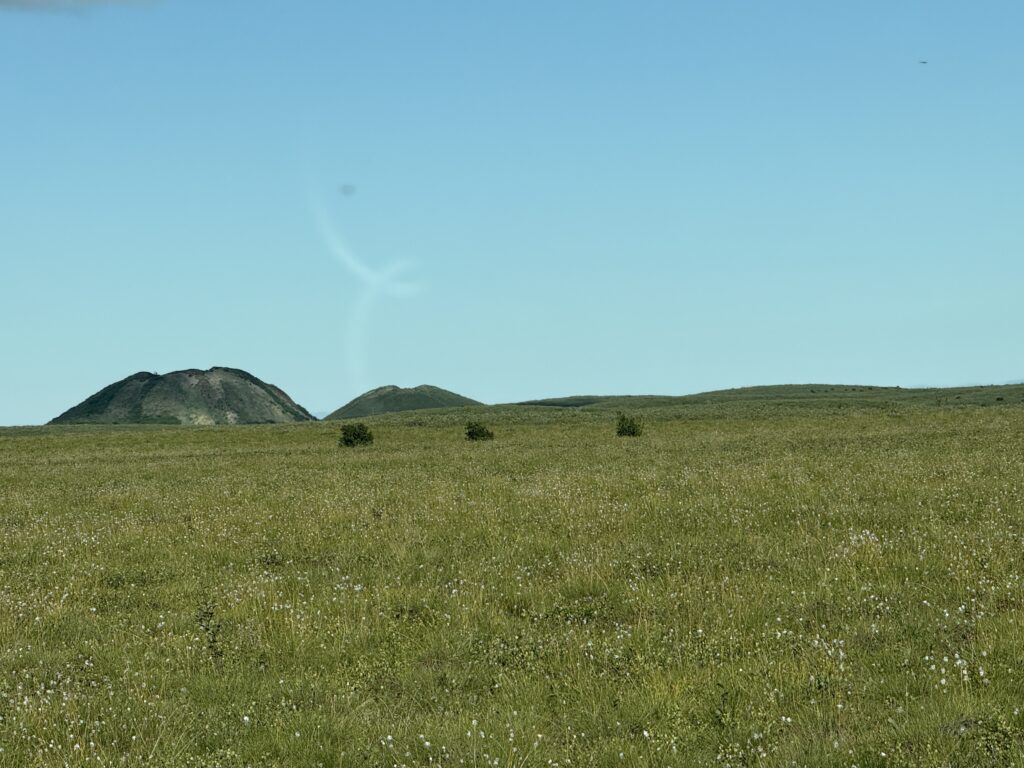(July 27)
Dear Folks,
Today was quite a day..
We started out going to the hospital. We were prepared to explain, but we did not have to–the word must have been passed. They have a large paved parking lot where we can run. The campground is gravel, which is tough on Karma. They also have an accessible flush toilet, which is a luxury. We bought a juice and headed out.
Today we went up Canada’s Arctic Highway. It’s an amazing feat. It had been a dream and vision for a long time. Up until they built this, you could only reach Tuk by motor vehicle in the winter by the ice road. In the warmer months, they would have to be supplied primarily by ship. A hope was that having an all-seasons road would help to promote tourism and development.
The road is less than a decade old and constantly being worked on. Both the Dempster and the road to Tuk have yards of gravel beneath the surface to protect the permafrost. They are very busy right now putting down more gravel.
They work long days, seven days a week. A couple of people we talked with who are from Inuvik said that the road to Tuk is rough–soft, with potholes and LOTS of gravel. They weren’t wrong. Miracle, our van, may never speak to us again
With these roads, there is either mud or dust. Today it was dust. Whenever you met anyone the dust would obscure everything: like a whiteout with dust.
When we got close to Tuk, we came to the Pingo observation area. You may be able to read an explanation on the signs we photographed. Or look it up. Pingoes look like regular hills. They have ice cores–very cool (with no sense of irony). The area is very flat and then you see these pingoes.
In a little while, we got into Tuk. You follow the road until it ends in the Arctic Ocean. There is some camping right there, but we had decided to stay in Inuvik for our three nights in these parts.
The insects are voracious. We had heard and read that. The summers are short and intense and the bugs make the most of it. Just in the short time we were outside there, we all got covered with bug bites.
We felt pure joy to be at the Arctic Ocean and its sign. All those years of planning came to fruition. It took 5,523 miles, but well worth it.
The man in the photo is Mickle. He and a friend rode their motorcycles up from Prince George BC to the Arctic. They hit rain a couple of days and had to go to a laundromat in Whitehorse to dry all their clothes. They plan to go home by the Alaska Highway, down through Watson Lake and Ft. Nelson. We shared our experiences with those places and also cautioned about the wildfires. Mickle’s wife has an interior design business. So he put a few stickers from the business on the back of the Arctic Ocean sign. It is covered with stickers. We never thought about stickers for BEYOND LIMITS. We should probably get some.
The ocean is reclaiming Tuk. Every summer, they have to pump out the town. But the ocean is winning. The structures are up on stilts but are settling and sliding. At some point, everyone will have to relocate.
The photo of Our Lady of Lourdes: she was the ship that they used for ministry until they built an actual church.
Tuk has a nice welcome center with a restroom and information . It has a wonderful ramp . Unfortunately, there is such a lip at the bottom of the ramp that a wheelchair would have a hard time accessing it. I could not get on it.
We needed gas before we headed back to Inuvik. We had underestimated how much gas it would take to fight our way up there. The one gas station, run by Arctic Petroleum, is what people here call a “card lock.” That means that no one is there: you are on your own. We have used those before. But this time the pump was surrounded by a wide mesh barrier. I could not get close enough to use the pump. There was an 800 number on the pump to call, which we did. But it is Sunday and the company is not local. What to do?
Then Derek appeared. We don’t know how he noticed us. He asked if he could help and we excitedly said yes. Derek is indigenous and has lived in Tuk his whole life. He likes to help tourist visitors. We can’t tell how old he is–certainly mature.
He said that already the days are starting to get a little shorter. The 24 hours of daylight there are in June and the first week in July. As they ease from September into October, the darkness grows. They have about five weeks of total darkness. In January, when the sun reappears, they have a festival. Derek said that next month, all the grass will turn color. We asked him about the sea reclaiming the land. He agreed that it’s coming.
And someone asked about charging Karma, our wheelchair. The device that plugs into 12 volt and converts to 110 does work now. We plugged in the 24 volt battery charger. It did indicate that it had power. But it would not charge–must not have been able to draw enough power. We are at the campground now, plugged into the power force. We will try to keep plugged in overnight. And we can plug in at Eagle Plains and the Tombstone interpretive center. Then we will be back to hotels.
Hugs and wags. Thanks for all your love and support. It has made a huge difference on this Journey.
The Lowman Family
